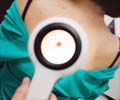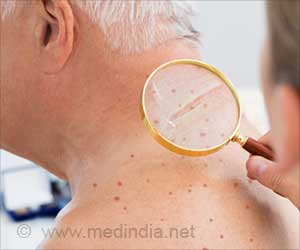Deletion of Hgma2 gene in mutated melanocyte can prevent the occurrence of skin melanomas
Highlights
- Under the continuous influence of UV radiation, cancer-causing genetic mutations can accumulate in the melanocyte stem cells
- And upon exceeding a certain threshold of these melanocyte stem cells, tumors may develop as tanning response from the sun
- Suppression of a new gene called Hgma2 gene can prevent the UV radiation trigger
Under normal conditions, ultraviolet (UV) radiation from the sun activates melanocytes to release melanin, a pigment that protects the skin from the sun's rays. But if melanocyte stem cells have surpassed a threshold of genetic mutations, a tumor can start to grow when those skin stem cells are activated by sun exposure.
"If you had mutations that were sufficient for melanoma, everything would be fine until you went out and got a sunburn," said Andrew White, assistant professor of biomedical sciences at Cornell's College of Veterinary Medicine, and senior author of a study published this month in the journal Cell Stem Cell.
Hyeongsun Moon, a postdoctoral researcher in White's lab, is the paper's lead author. "The stimuli that would normally just give you a tanning response could, in fact, start a melanoma instead," White said.
The researchers also may have discovered a way to prevent melanomas caused by mutated stem cells. A gene called Hgma2 was suspected to become expressed in the skin under UV radiation.
Moon, White, and colleagues used mice engineered with melanocyte stem cell mutations. One set of mice had the mutations, while another set with the mutations had the Hgma2 gene deleted.
More study is needed to better understand the Hgma2 gene's function.
"We have an actual mechanism, with Hgma2, that can be explored in the future and could be a way we can prevent melanomas from happening," White said.
Source-Eurekalert
















